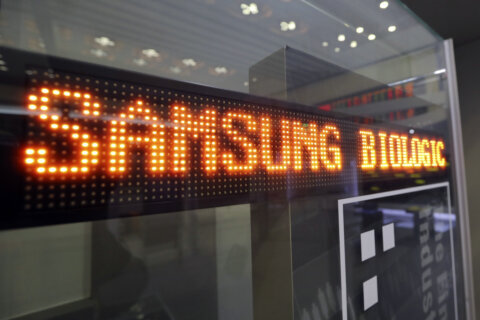BETHESDA, Md. — A forum on Saturday in Montgomery County began with a simple question: are we keeping pace? Many residents believe the answer is “no.”
Some folks at the event felt like Montgomery County was falling behind Fairfax County, Arlington and the District of Columbia.
“Quite frankly the entire region is suffering,” says Montgomery County Councilmember Roger Berliner, who hosted the event in Bethesda.
“I think our entire region is trying to transition from a region that’s been incredibly dependent on the federal government to one in which where the private sector becomes a more significant part of the local economy. We’re not there yet and I think we’re all in this together,” he adds.
Across the busy room, there were common themes among the individual workgroups. Everyone agreed that traffic is so bad that it can be nearly impossible to get out of one’s neighborhood, at times.
As Berliner and other lawmakers look to bring more private sector companies into the region, they also know that it cannot remain attractive if employees cannot expect a predictable and reliable commute.
“Congestion is the number one issue for me in the county. We need to be able to offer better transit options that will give people more choices to get out of their cars and increase the capacity on our roadways. So when we talk about removing a lane for cars to be repurposed to bus-rapid transit, we are talking about moving more people quickly,” says Berliner.
Valerie Barr, of Silver Spring, agrees that mass transit is the key. She supports bus-rapid transit, although she also believes Ride-On service is pretty good near her home near 16th Street, north of East-West Highway.
“One of the things we talked about at our table is not to have so much of an emphasis on drivers and cars. We need more options for walking, biking and public transportation so people don’t feel like they have to use their car to get somewhere. People have choices. And that would help to decrease the number of us that are all on the road at the same time,” says Barr.
James Zapp, of Four Corners, thinks that the key to better commutes is to improve the Montgomery County Ride-On system. He says there are locations within Montgomery County where people live within a few miles of a Metro station, but cannot find a reliable way to make that short trip without a car.
“For example in the Kensington Heights neighborhood, which is just south of the Wheaton Mall. The problem that people have there is people want to get to the Wheaton Metro, but Ride-On service doesn’t go through their neighborhood,” says Zapp.
“Or look at where I live in Four Corners. We’re a few miles away from the Silver Spring Metro, but the only way to get there is to walk over to Route 29. You may see several express buses passing you before one stops for a local trip,” he adds.
Transportation planners at the Council of Governments have encouraged activity centers as a solution. Activity centers are places where people can live, work and play. The idea is that people could have everything they need in one place, including their job. No more long commutes. No more car to train to bus. Communities would be walkable.
Richard Hoye, of Bethesda, doesn’t own a car and walks or bikes to the Metro. He says that, even as a former firefighter, he never needed a car to get to work.
“The region frames the question wrong. We’re so focused on cars. We don’t focus enough on making our communities walkable. For example, when crews plowed snow on Thursday it was done with cars in mind. The snow was pushed up onto the sidewalks, not taking people walking into consideration,” says Hoye.
“It doesn’t mean we eschew cars for walking, it means we have a choice. And that we have choices given even footing in the county,” he adds.
Most seemed to agree that Metro was key to the region and that elected leaders in Annapolis need to do a better job to fund Metro. Few asked whether Metro is mismanaged, but rather felt the agency is struggling to provide safety and reliable transit because it does not have enough money.







